
Hypotrix is a genus of moths of the family Noctuidae.

Raphia frater, the brother moth or simply the brother, is a moth of the family Noctuidae. It is found from Nova Scotia west, across the forested regions of Canada to British Columbia, south to Mississippi in the east. The southern limits in the west are uncertain due to confusion with several closely related species or forms.
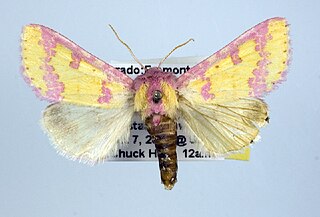
Psectrotarsia suavis is a species of moth of the family Noctuidae. It is found from south-western South Dakota, extreme north-eastern and western Nebraska, northern and south-western Kansas, eastern Colorado, New Mexico east of the Rocky Mountains, southern Arizona, and the panhandles of Oklahoma and Texas and in south central and south-western Texas. There are two records from Mexico, one from Chihuahua and one from San Luis Potosi.

Hypotrix ferricola is a moth of the family Noctuidae first described by Smith in 1905. It is found in southern North America from south-eastern Arizona, south-western New Mexico and northern Mexico.

Hypotrix diplogramma is a moth of the family Noctuidae first described by William Schaus in 1903. It is found in southern North America from eastern Arizona and south-western New Mexico southward at least to Mexico City.

Hypotrix parallela is a moth of the family Noctuidae. It is found from south-western Colorado, southward through eastern Arizona, New Mexico, and western Texas to the State of Durango in northern Mexico.

Hypotrix rubra is a moth of the family Noctuidae. It is found from south-western New Mexico and south-eastern Arizona southward to the State of Durango in northern Mexico.

Hypotrix spinosa is a moth of the family Noctuidae. It is a very rarely collected species that is known only from south-eastern Arizona, south-western New Mexico, and the State of Durango in northern Mexico.

Hypotrix ocularis is a moth of the family Noctuidae. It is found from south-western New Mexico and south-eastern Arizona southward to Mexico City.

Hypotrix basistriga is a moth of the family Noctuidae. It is known only from the White Mountains and Pinaleño Mountains in eastern Arizona.

Hypotrix alamosa is a moth of the family Noctuidae first described by William Barnes in 1904. It is known only from the United States in south-eastern Arizona.

Hypotrix trifascia is a moth of the family Noctuidae. It is found from southern Utah and Colorado southward through Arizona, New Mexico, and western Texas to northern Mexico.
Hypotrix vigasia is a moth of the family Noctuidae. It is found in Veracruz in south-eastern Mexico.

Hypotrix optima is a moth of the family Noctuidae. It is found from south-eastern Arizona and central New Mexico southward to Mexico City.
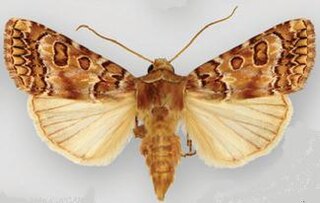
Hypotrix hueco is a moth of the family Noctuidae first described by William Barnes in 1904. It is known only from south-eastern Arizona in the United States.

Hypotrix lunata is a moth of the family Noctuidae. It is found in the range of Arizona to northern Mexico.

Anhypotrix tristis is a moth of the family Noctuidae first described by William Barnes and James Halliday McDunnough in 1910. It is found from eastern Arizona and northern New Mexico southward in the Sierra Madre Occidental to the state of Durango in Mexico.
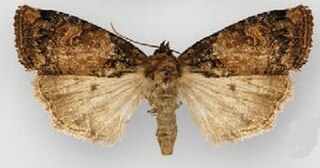
Bryolymnia ensina is a moth of the family Noctuidae first described by William Barnes in 1907. It occurs in coniferous forests from south-eastern Arizona and south-western New Mexico southward in the Sierra Madre Occidental to the state of Durango in Mexico.
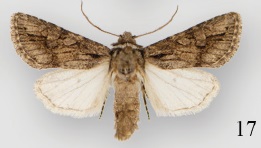
Protorthodes argentoppida is a moth in the family Noctuidae first described by James Halliday McDunnough in 1943. It has a limited range within North America, occurring in xeric forested areas of various mountain ranges in New Mexico and in the White Mountains in east-central Arizona.
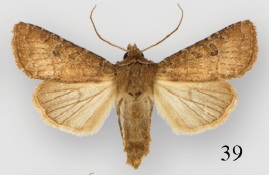
Protorthodes ustulata is a moth in the family Noctuidae first described by J. Donald Lafontaine, J. Bruce Walsh and Clifford D. Ferris in 2014. It is found in North America from south-eastern Wyoming southward to the Guadalupe Mountains in western Texas and westward to central and south-eastern Arizona and northern Mexico.
This page is based on this
Wikipedia article Text is available under the
CC BY-SA 4.0 license; additional terms may apply.
Images, videos and audio are available under their respective licenses.










